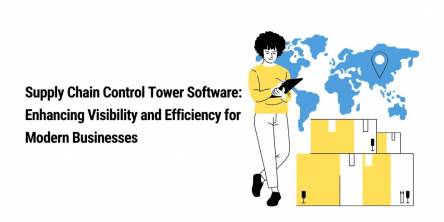How to Build a Project Management Office?
A Project Management Office (PMO) is a centralized, coordinating body within an organisation that provides an infrastructure of people, procedures, and tools for effective project management. It sets standards, enforces accountability and provides governance to manage a number of projects objectively and fruitfully.
The following are some of the many benefits of having a PMO within an organization:-
- Deliver projects with efficiency and consistency.
- Implement standard operating practices.
- Provide transparent status and financial reporting to the top management.
- Aligning investments towards organizational strategy.
- Establish foundation for managing organizational portfolio effectively.
- Improve stakeholder/customer satisfaction.
- Enhance employee productivity.
- Improve profitability by limiting project failures, better resource utilization and effective execution of high return on investment.
- Archive data on the project’s operational performance.
Steps for building the Project Management Office:
Enlist support from Senior Management:-
Before you begin to set up a structured PMO, you need to get the backing from the top-level management as well as the required funding. For obtaining support and agreement from senior management, you will need to justify the changes in organizational structure by explaining the cost-benefit and increment in return on investments.
Establish the Role and Scope of the PMO:-
The role and scope of a PMO can be different in different organisations. While building a PMO, you need to consult your stakeholders to understand their requirements and goals so as to determine how and where the PMO will fit within the organisation. Once the objectives of having a PMO are set, you have to prepare a PMO implementation plan.
Formulate Policies and Templates:-
You need to formulate and document appropriate policies and project templates. These policies and templates will guide the project managers regarding project approval procedures, recruitment and training, funding, resource management and other day-to-day tasks. Standardisation of procedures plays an important part in allowing an organisation to compare different projects and allocate resources wherever necessary. Later, when the PMO grows, these policies may be further reviewed and refined by the Director of PMO in consultation with the individual project managers.
Determine the Structure and Build the Team:-
There is no formula for determining the PMO structure as it greatly depends on the current organizational structure, organizational culture and management style. Some prefer to manage all aspects of the project assigned to them including planning, scheduling, budgeting, resource management and communication. There are others who coordinate these functions with the support coming from various corresponding departments.
Identify Skills and Train the Staff:-
You need to identify the skill sets and proficiency levels of project managers and staff in order to establish the kind of training required to be given. This information can be obtained by reviewing the status of various on-going projects. Most of the training content can be based on the standard policies and procedures defined at the start of the PMO. It is quite reasonable to assume that there will be changes in the staff members and organisational culture over a period of time. An on-going training programme will help train new employees about operating standards and existing employees about procedural changes.
Project Mangement Software Mac
Review the PMO:-
Once the PMO is established, it is the task of the PMO to continue monitoring and measuring project successes. Not only that, it also need to ensure that the PMO continues to stay relevant within the organization by managing a portfolio of projects. Also, it needs to keep identifying processes that need improvement and then develop and implement appropriate improvement measures. The PMO Director has to regularly review the PMO's performance and scope so that it remains relevant to the organisation's changing business needs.
Conclusion:-
For the PMO to stay relevant and sustainable, you will have to make sure all projects pass through the PMO. Otherwise, there would be no reason to have a PMO within an organization. An effective PMO acts as a catalyst for greater productivity and efficiency. It enables an organisation to achieve more while using fewer resources with lesser risk. All these factors will greatly contribute towards improving the organization’s project success rate.
Similar Articles
Simplify wealth management with advisor-directed trusts—separate roles, tailored investments, and expert oversight for efficient and flexible asset growth.
Let's face it — IT costs are eating your budget, and your CFO is giving you that look again. The one that says, "Find cuts or I will."
Sponsorship platforms are critical in scaling partnership programs in today's fast-paced digital world. Leveraging advanced sponsorship management software allows businesses to seamlessly manage their sponsorship activities, streamline processes, and optimize relationships with partners.
In today’s fast-paced world, businesses are constantly searching for ways to make their supply chains more efficient. Whether it’s managing stock levels, keeping customers happy, or reducing costs, there’s no room for delays or mistakes
Learn how Passive RFID tracking revolutionizes event management with seamless check-ins, real-time attendee insights, and enhanced security. Transform your next event!
The demands of the modern world dictate that a firm must provide its customers with excellent experiences. An essential aspect of this process, which is often randomly overlooked, however, remains how companies handle and organize queues
Discover how sustainable practices and technology in fleet management reduce costs, cut emissions, and drive eco-friendly operations for a greener future.
Boost your business success with CRM strategies. Learn how to enhance customer relationships, streamline operations, and drive performance with key insights.
Discover effective strategies to reduce employee turnover, improve retention, and build a motivated workforce by enhancing work culture, management, and compensation.









